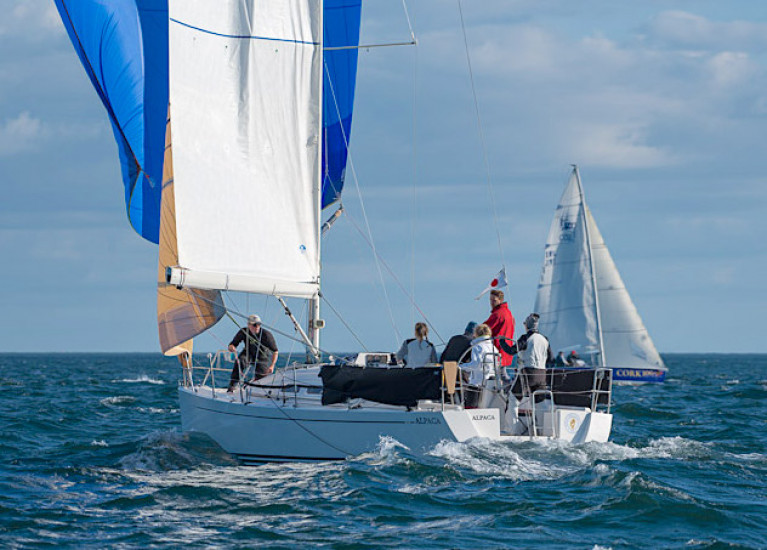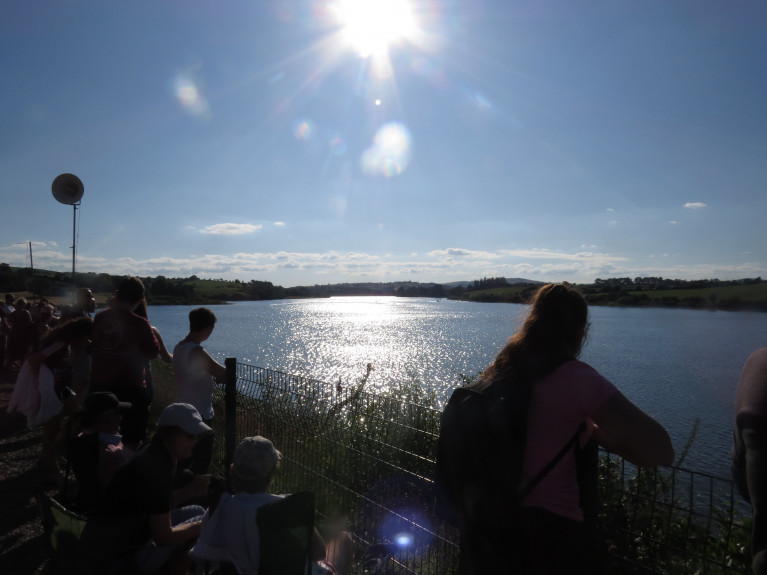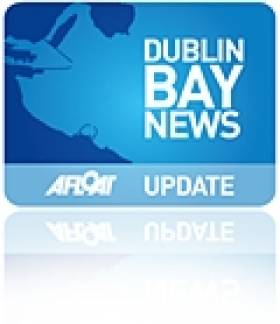Displaying items by tag: Clubs
Ireland's Coronavirus Cancellations? Healthy Club Sailors Have Had To Accept It With Good Grace
"I just want to go sailing and racing. Until we had to slam down the shutters this week, I didn't really realise just how much the ordinary club sailing programme and a special local annual series like the Autumn League means to me and people like me, and to sailing families throughout Ireland."
"I don't think those who advocate such across-the-board moves realise what a damaging effect stopping us going racing has on the physical and mental well-being of Ireland's grass-roots sailors. We never needed our sailing more than we do now."
The speaker is lifetime sailor Darragh Connolly, Rear Admiral (Keelboats) of the Royal Cork Yacht Club, and we were talking a couple of days after he'd had to announce that the remaining races of the Club's popular AIB Autumn League had been cancelled in compliance with Irish Sailing's directive, in light of our National Authority's interpretation of the Government's imposition of Level 3 in the COVID-19 Combat Programme.
 Darragh Connolly, Rear Admiral (Keelboats) of the Royal Cork Yacht Club, this week had the unenviable task of calling an early close to the RCYC AIB Autumn League. Photo: Robert Bateman
Darragh Connolly, Rear Admiral (Keelboats) of the Royal Cork Yacht Club, this week had the unenviable task of calling an early close to the RCYC AIB Autumn League. Photo: Robert Bateman
It is clearly arguable that the Government Directive, as interpreted by Irish Sailing, is actually preventing people from doing something which is beneficial to their overall physical and mental health, an activity which in turn is very positive in enhancing their ability to reinforce their natural resistance to contracting COVID-19.
And for Ireland's many club sailors, it is particularly bewildering to have arrived at this situation in this week of all weeks, when Irish Sailing will have played the key role in having our Laser Performance Group and other top potential Olympians taking part (with laudable success) in major events in places like Poland and Austria, countries which - like Ireland - are currently coping with a rising coronavirus rate.
 Who's for racing? The busy start line in this week's Laser Senior Europeans in Gdansk
Who's for racing? The busy start line in this week's Laser Senior Europeans in Gdansk
The infection risk which our athletes are taking in travelling across Europe, and then competing in an event which will have numerous supporting officials, is surely significantly greater than a local club sailor has in joining her or his boat in its familiar berth for another two or three hours of healthy racing in a successfully-proven socially-distanced setup.
KNIFE-EDGE DECISION?
There are those of wide experience in sailing administration who reckon that it was actually a knife-edge choice as to whether or not Level 3 means that local sailing races were now off-limits. But being a minority sport like sailing, with a possibly problematic image of affluence and elitism, when the directives come down from above our national officialdom has to toe the official line, keeping the head down to go along with the mantra that we're all in this together.
Inevitably in such a situation, the simple hopes of the grassroots get trampled under foot. Yet if we stand back and take a cold hard look at the situation, the variations in the situation between those who would be actively racing in boats afloat if they could, and those who are most at risk ashore, is an enormous chasm. Applying a "one size fits all" approach to the crisis situation may help in terms of a benign public perception of different sports and activities and shared risk, but it flies in the face of reality. And in terms of the well-being of this clearly identifiable sector of the population who want to go sailing, it's actively harmful.
 "Once upon a time in West Cork". In order to keep their sport going, the Irish sailing community have had to become accustomed to doing entirely without carefree assemblies like this one in Baltimore.
"Once upon a time in West Cork". In order to keep their sport going, the Irish sailing community have had to become accustomed to doing entirely without carefree assemblies like this one in Baltimore.
Put crudely, "We're all in this together" is a denial of the facts of the situation. Certainly, we're in the same storm, but we're in some very different boats. The incidence of coronavirus among those who would be regularly sailing actively - if they were allowed - appears to be vanishingly small.
We've been taking an admittedly random sample from a small population, but we know of only two sailors who came down with the bug (and both have recovered). One case is a fearless bow-man (of course) who was right in the thick of it in January on a hectic ski-ing holiday to Coronavirus Central – otherwise Ischgl in Austria - while the other got it on a group golf outing to Spain.
COASTAL LIVING IS GOOD FOR YOU
Shoot us down in flames by all means if you have knowledge of significant occurrences of COVID-19 in the sailing population as a result of being sailing. But the fact is that everything in our sport militates against it. For a start, though you can sail almost anywhere in Ireland, the majority of the sailing population lives in coastal districts. And the health benefits of this have been clearly demonstrated with brutal clarity in the Dublin area.
There, the lowest occurrence is in Blackrock in its breezy ozone-filled location on the shores of Dublin Bay, where the level of infection is only a fraction of the levels away up in the crowded northwest of the city, where it's about as far from the sea as you can get within city limits.
 "Healthsville, Ireland" – the seaside township of Blackrock has the lowest incidence of coronavirus in Dublin.
"Healthsville, Ireland" – the seaside township of Blackrock has the lowest incidence of coronavirus in Dublin.
Admittedly that's a rather vague and generalising analysis, but this week, much more specific figured were published comparing coronavirus incidence in coastal towns with that of inland towns in England and Wales. As many of the coastal towns have a notably older population than the inland centres, you'd expect a disease-favouring bias in the seaside retirement region. But even with that, the difference in the opposite direction is very marked.
STAY ALIVE – STAY BY THE SEA
It's complex to make a full analysis, as the older demographic of most English coastal towns may mean less active socialising, and a greater readiness to cocoon completely. But nevertheless, the figures are quite stark - at this stage of the Pandemic, the COVID-19 death rate in England's large coastal towns is 63 per 100,000, while in inland towns of comparable size, the death rate is 102 per 100,000.
Of course, you can get some benefit from coastal living simply by throwing open the window from time to time (mock not, it is extremely important to do so), and getting outside and absorbing as much Vitamin D as possible in that ozone-laden air, for enclosed spaces are the virus's accomplice, and Vitamin D deficiency - a significant problem in Ireland – is offering Mr COVID-19 a welcoming open door.
You can meet some of the health requirements by taking a solitary or socially-distanced walk down Dun Laoghaire pier. But if you really want to find the optimal conditions for building up resistance to coronavirus, you'll find them as a member of the crew pod aboard a sailing boat racing in an Irish club event.
 Better than a spa treatment. While a walk down one of Dun Laoghaire's pier has enormous health benefits, even better for overall physical and mental health is having a busy Water Wag race in the harbour. Photo: W M Nixon
Better than a spa treatment. While a walk down one of Dun Laoghaire's pier has enormous health benefits, even better for overall physical and mental health is having a busy Water Wag race in the harbour. Photo: W M Nixon
There's social stimulation, mental alertness, thinking and problem-solving of a kind totally different to what's required ashore, and there's exercise, team effort, very fresh air, and the effortless absorption of Vit D.
NO SPECTATOR CROWD PROBLEMS
And we're not a spectator sport. Nobody would pay to watch ordinary sailing, for the only worthwhile way to do so is by actively taking part. Thus sailing does not have crowds of undisciplined supporters and spectators who flout every social-distancing rule and mask-wearing requirements with total abandon when their team has won. In sailing by contrast, while clubs have been taking heroic steps to provide outdoor catering and space to maintain social distance, the reality is that many sailors have simply tidied up their boats at race's end, and gone straight home, having long since become accustomed to doing without the traditional après sailing.
Now all this is denied to us, even with the compliance with all rules, and the extremely low – if at all – incidence of coronavirus in the sailing population. In this situation, sailing administrators have been between a rock and a hard place in the face of the one-size-fits-all restrictions being imposed in pursuit of COVID-19 clamp-down.
BOATS SIT UNUSED, GOOD SAILING DAYS GO TO WASTE
The grass-roots sailors want to go sailing and particularly club racing. They know it is good for them. They can see elite international athletes getting in their sailing. They can see people who are learning to sail being allowed to go sailing. Yet in the face of this very blunt instrument, a blanket ban which covers activities of many very different kinds, boats sit unused. Good sailing days go to waste. Sailors go to seed. And our clubs, our remarkable clubs that are Ireland's greatest contribution to the development of sailing worldwide as we know it today, are facing a crisis situation.
 You're not only having fun – it's actually very good for you. Paul Reilly and Dave Howard sucking up the Vitamin D and all the right kinds of ions as they race one of Howth YC's J/80s in the annual Aqua Restaurant Two-Handed Race in July. 2020's staging had an entry of 38 boats, the winners were Diane Kissane and Graham Curran in another J/80, and in a compressed season the memories of this special event – which was raced round Lambay – will become ever more precious. Photo: Lynne Reilly
You're not only having fun – it's actually very good for you. Paul Reilly and Dave Howard sucking up the Vitamin D and all the right kinds of ions as they race one of Howth YC's J/80s in the annual Aqua Restaurant Two-Handed Race in July. 2020's staging had an entry of 38 boats, the winners were Diane Kissane and Graham Curran in another J/80, and in a compressed season the memories of this special event – which was raced round Lambay – will become ever more precious. Photo: Lynne Reilly
In the seeming dead-end of this rock-and-hard-place situation, the good news is that Ireland's club administrators – the real backbone of our national sailing infrastructure – have been closely conferring of late to see if they can come up with a more imaginative and visionary way of dealing with the situation in order to get people sailing within sensible limits which takes account of the fact that in face of the virus incidence continuing to rise, the relative death rate continues to fall, or it does as long as supplies of the new medications continue to meet demand.
If all this seems a slightly selfish approach by a relatively fortunate sector of the population, nothing could be further from the truth. If the sailing community thought for a moment that totally giving up sailing would make a real difference to the spread of COVID-19, then they'd stop it today.
But instead, one of those trying to get sailing going again says that much of his motivation has come from meeting people in the front line of the battle against coronavirus who also happen to be keen sailors. He says their shared opinion is that being able to go sailing and get in a spot of racing even once a week is a real morale booster and a fabulous energiser after hours of working in ICU.
Close Now Rowing Ireland Tells Clubs
Irish rowing clubs have been asked to close down completely. The Rowing Ireland working group on Covid-19 took into account government guidelines and requested this in the interests of club members.
The working group will also consider the implications of the ongoing lack of competition on the novice grade, once there is more clarity on whether or when there will be competition this season. They have decided that umpires with a provincial licence will not need to re-sit a test and and “can carry the two regatta requirement to later on this year or next year”.
Ireland’s Boats & People – How Do We Get Them Together?
The recently-published ISA Survey of Club Racing commissioned and supervised by Board Member Jack Roy has started the process of putting together a realistic picture of how we sail and go afloat for recreation, and it was analysed on publication here in Afloat.ie.
It’s logical to have made the beginning with club racing, as racing provides its own narrative and a straightforward set of entry numbers and results. But it will become more complex as the national authority tries to provide realistic figures for day sailing’s less competitive aspects. And of course, once we enter the world of cruising as defined by sailing and boating projects which include passage making, both coastal and offshore, together with overnight on-board stops, then it can become much more difficult to get meaningful data.
Yet with the ISA’s Cruising Conference for February 20th already booked out within a few days of being announced on Afloat.ie, clearly that is an area in search of services and support, a section of sailing which is difficult to quantify yet obviously of strong interest to a significant number of boat enthusiasts. W M Nixon takes a look at how the complexity of our sport’s many specialities makes it difficult to provide a clearcut picture for possible recruits to sailing.
Where would we be without the International Optimist Dinghy? The little solo-sailing boxes and their attendant support teams of mum and dad and the dog and the old 4X4 or station wagon or people carrier or whatever may seem to take up an awful lot of space and time, and all just so that one little person can go sailing.
But at least that one little person does go sailing. The ISA figures are brutally straightforward. In terms of genuine turnouts afloat at clubs throughout Ireland, in boat numbers the active Optimists are exceeded only by the Lasers, and this is arguably because Lasers aren’t age-limited, whereas the Optimists most definitely are.

Optimist airborne. This is Ireland's second most popular class
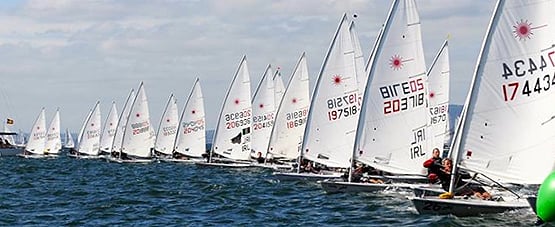
Ireland’s most popular dinghy class, the Laser is seen here at the Zhik Irish Nationals at Ballyholme
So we give a qualified cheer for the success of these two little boats. But it’s qualified because they’re single-handers which fail to provide any crew-relating sailing skills. Leading sailing figures as diverse as Des McWilliam of Crosshaven and Norman Lee of Greystones have been eloquent in promoting the notion that we should be doing more – much more – to encourage two-handed boats, and if we can persuade people into three-handed boats, well, so much the better.
Certainly that’s one of the reasons why our header photo says so much. A lone sailor in an Optimist or Laser promotes too much of a solitary, even an isolated image. And a two-handed boat like the GP 14, whose strong fleet figures in the ISA survey show the class’s vigour, is arguably just an act for a dynamic duo – it’s Strictly Come Dancing goes sailing…..
But getting three together to race a characterful boat like the National 18 with style – now that’s something special, that really is a superb combination of people skills interacting with sailing talent. And it’s a joy to behold. Yet anyone can see that for a complete beginner to sailing, this extraordinary silhouette of Tommy Dwyer’s National 18 against the November sky above the Hill of Howth will have an otherworldly air about it – “That’s not for me” is as likely a response as “Let’s have a go at that”.
Even those of us who have been in sailing for longer than we care to remember find the image decidedly thought-provoking, for we have some idea of what has been involved in creating the circumstances for this seemingly effortless balancing act, this lighter-than-air effect in the unlikely setting of a November afternoon.
Over the past year or so we have been recounting in Afloat,ie how the Cork Harbour National 18 Class, with very tangible backing from the Royal Cork Yacht Club, have been in the forefront of the development of the new ground-breaking Phil Morrison take on the long-established National 18, which is a developmental class which from time to time takes a leap in hull design, and moves forward in order to keep the spirit alive.
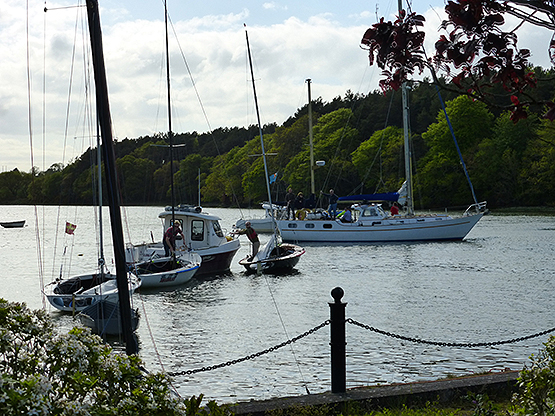
The National 18s are part of the fabric of Cork Harbour sailing. Before the new Morrison boats arrived in July, the old fleet were seen here in May 2015 after their annual race to Ballinacurra in northeast Cork Harbour in company with the Dwyer brothers’ cruising ketch. Photo: W M Nixon
Acceptance of this is something which seems to be bred into Cork’s National 18 enthusiasts, many of whom have the advantage of being firmly of the opinion that a proper dinghy needs three people to sail it. But the social matrix which has built up around Cork Harbour over many decades with this concept at its heart is not something which will necessarily travel easily to other areas, and although the six boats of the National 18 flotilla which visited Howth for the Open Day got a great reception and gave many people from other classes a marvellous time afloat, it’s probable that the very different mood around sailing in Dublin means that something so technically and socially challenging as a three man dinghy is a step too far.
Sailing in the greater Dublin area seems to exist within a framework of independent balloons. While there are those who will happily move from one boat type to another and cheerfully spread their talents and enjoyment about, by contrast there’s the Dublin Bay Sailing Club Thursday Evening Phenomenon.
Thursday is when the DBSC cruiser classes go out to race. And there’s an entire cohort of people, mostly folk who work in offices in the city, who on a Thursday evening go straight to Dun Laoghaire, get aboard a pontoon-based cruiser owned by someone else, go out and race in some very specific crewing job, then come back in and have supper in club or pub with their shipmates, and then that’s it until next Thursday. Just one evening each summer mid-week is their entire sailing programme. Weekends are for something else. And as for the hassle and mixed joys of boat ownership and maintenance, that’s not their department at all.
It’s a very metropolitan, very citified yet specialized way of doing things, and Dublin is one of the very few cities whose location facilitates it. It will be fascinating to measure it, for Dublin’s way of sailing is steeped in history and tradition. But for now it’s refreshing to look at a place which has had a sailing tradition in times past, but somehow lost it, yet it’s coming back again, and one of the good news stories towards the end of 2015 is that the new Youghal Sailing Club has been accepted into the ISA fold.
Youghal at present is a difficult place for sailing, as the tidal power of the mighty Munster Blackwater sweeps straight through the estuary and along the old town’s waterfront, and the creation of any meaningful modern facilities will have the immediate difficulty of silting by incredibly adhesive black mud.

With the sun out, and the tide in, Youghal looks to be an ideal location for the easy installation of a marina….....Photo: W M Nixon
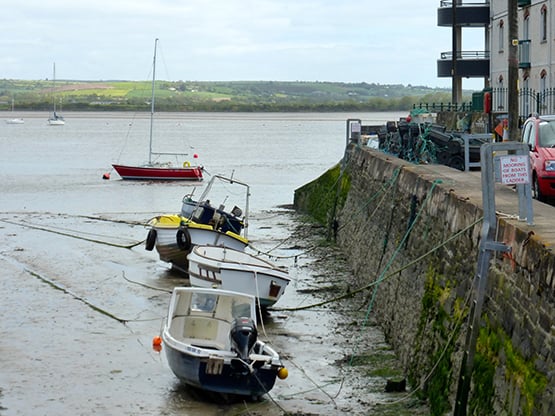
….but with the sun in and the tide out, the mud problem is revealed. Photo: W M Nixon
Thus, as dedicated Afloat.ie readers will have recently observed, no sooner had one group announced that a marina in Youghal was on the way than another longer-established group quietly suppressed the story, as they’re well aware of the engineering and dredging difficulties involved, and premature announcements will only slow any project in the long run.
In the fullness of time, a marina at Youghal will be a godsend for any cruiser plugging along the south coast. It’s not always the easiest coast in the world to make a passage along, sometimes it can seem an awfully long way to Cork from Dunmore East or Kilmore Quay even if you do make stopovers at Dungarvan or Helvick, and there are times when the hardiest seafarer is glad enough to get his boat secured to a good big pontoon.
But that’s for the future. Meantime, the locally-based keelboats are using either the restless anchorage off the town, or the more serene pool across the estuary at Ferry Point on the east shore, while the new club’s flotilla of GP 14s are stored in spare warehouse space during non-sailing time, and when they do go sailing it turns out their clubhouse is a moveable feast - it’s a caravan which can be towed to a choice of sailing locations.
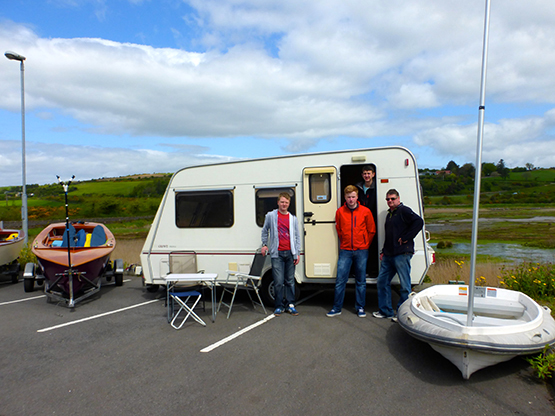
A moveable feast. Members of the newly-affiliated Youghal Sailing Club with their caravan HQ, Adrian Lee in doorway. Photo: W M Nixon
On the national stage, it is young Youghal GP 14 sailor Adrian Lee who has been among those flying the club’s flag, and there’s hope in the air. When we were there in May on a fine day that promised a summer which never arrived, we couldn’t help but think that when they do get their facilities and maybe even a clubhouse, they’ll look back to the days of the caravan and ad hoc racing arrangements with sweet nostalgia. For sometimes, it’s much better to be travelling than it is to arrive.
But for the rest of us, the message from Youghal is simple. The sea is for sailing. Use it or lose it. By all means get proper people surveys done which indicate the way numbers are shaping up and things are going. But really, if you want to persuade people to go sailing, the best way is by example, getting afloat as much as possible yourself. And maybe then you’ll find the time to welcome aboard newcomers too.

Reviving Youghal sailing – on race days, the club’s caravan is simply towed down to the pier and the races are started from there. Photo: W M Nixon
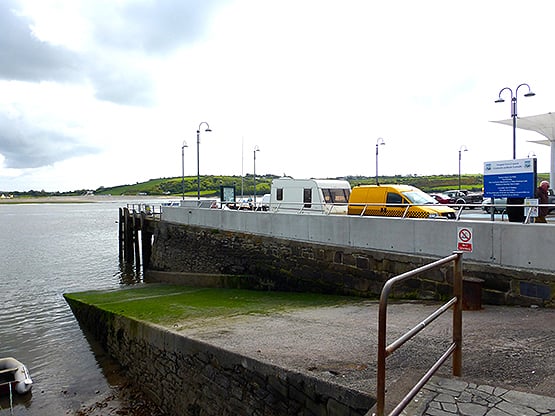
Youghal’s massive public slip provides launching for the YSC sailing dinghies, but during 2015 the boats had to be stored at the other end of town when not in use. Photo: W M Nixon
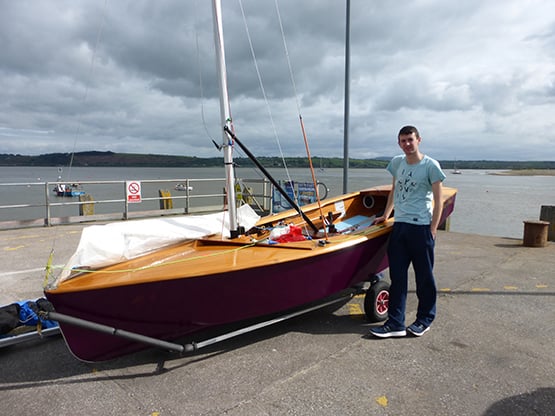
The pace-setter. Adrian Lee of Youghal SC with his Duffin-built GP14. Photo: W M Nixon
Click to download: ISA Survey of Club Racing
Dun Laoghaire Yacht Club 2012 Regatta Dates
#REGATTA–The four Dun Laoghaire waterfront Yacht Clubs have released their sailing regatta dates for 2012. In spite of many other racing fixtures on the bay the waterfront regattas remain a traditional favourite starting with the Dun Laoghaire Motor Yacht Club event on Saturday, June 9th.
Dun Laoghaire Yacht Club Regatta Calendar
Dun Laoghaire Motor Yacht Club Regatta 9th June
National Yacht Club Regatta 23rd June
Royal Irish Yacht Club Regatta 30th June
Royal St. George Yacht Club Regatta 7th July
Ballyronan Boat Club
Our club is situated in the village of Ballyronan which lies ont he shores of the north western corner of Lough Neagh. We're a small but enthusiastic club and new members are welcome. If you're interested in joining, please contact us. Conor McGuckin, Commodore, 2009–2011
Ballyronan Boat Club, Ballyronan Marina, Shore Road, Ballyronan, Magherafelt BT45
Have we got your club details? Click here to get involved
Royal Western Yacht Club of Ireland
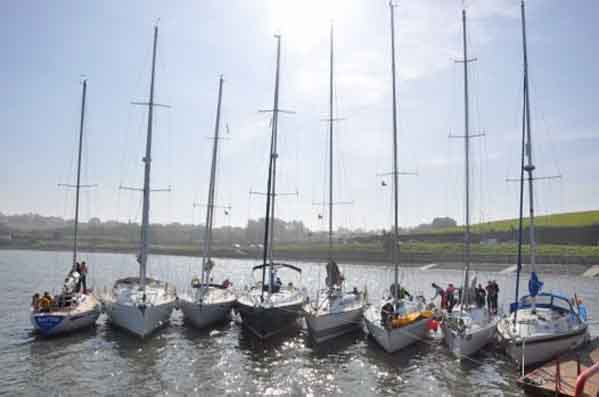
Glin Castle, 2009, courtesy of the RWYCI website
History
The Western Yacht Club has a very interesting and checkered history. The following article by Adrian O'Connell traces its origins as the 'Royal Western Yacht Club of Ireland' up to the present day.
The ingenious ideas of Sir William Petty in the mid-1600s in Dublin, when he constructed a catamaran to prove that he would be able to transport the Royal Mail across the Irish Sea to Anglesey at over twice the speed of the then Mail Boat, fell on deaf ears, though nearly four centuries later high speed catamarans ply the same routes providing the same service. Patty’s ideas established Dublin as an area of maritime experimentation for many years to come, when yacht and sailing clubs developed all around the coast of Ireland in the 19th Century.
In 1720 or thereabouts the Water Club of Cork Harbour was established by local gentlemen who had suitable seagoing vessels. The organisers drew up a set of rules to keep the membership in line and developing in the right direction. At first the membership was limited to six and then enlarged to 25; however exclusivity was the rule, keeping out the unruly elements (possibly still to be found around the waters of Ireland today…). The Club had a rule where if the Club Secretary allowed a non-member into the Club House he would be instantly dismissed. Fortnightly sailing excursions and dinner parties were arranged to correspond with the Spring tides. The members neither cruised or raced but manoeuvred under the command of an Admiral and carried out fleet manoeuvres in Naval fashion. The sailing discipline had to be adhered to at all times and the fleet was controlled by flag signals hoisted by the flagship. The Club went into decline around 1765 but re-established itself in 1806.
One of the Water Club members was Col. John Bateman Fitzgerald Knight of Glin. When he built Glin Castle on the south shore of the Shannon Estuary, he had the yacht Farmer, a large 18 gun brig, built in 1780 to enjoy sailing and cruising all along the west coast. Five years previously the Royal Thames Yacht Club of London was established when the Cumberland Fleet was formed. Apathy and acrimony destroyed the original club, the present club was established with a Royal Warrant being issued in 1830.
Down in Cork a rash of new royal yacht clubs were being formed. In 1872 the Munster Model Yacht Club was founded as a Corinthian or Amateur Yacht Club to provide the basis of amateur racing without monetary rewards, as against the professionally crewed racing fleets of wealthy owners who raced for wagers. This club was eventually named the Royal Munster Yacht Club and though clubless for many years, it settled in the Clubhouse of the Cork Harbour Motor Yacht Club at Crosshaven in the 1930s. The Royal Munster merged with the dormant Royal Cork Yacht Club of Cobh which claimed its decendancy from the original Cork Water Club of 1720. In fact, the Royal writ establishing the Royal Cork was given in 1831 and it subsequently established itself where it is today in Crosshaven.
On the Shannon Estuary, with the Knight of Glin’s encouragement, the numbers of commercial local sailing trading vessels was growing apace with the establishment of towns and sea-going trade along the estuary. It soon became an established fact of life during the summer months that interested groups organised regattas for all the types of craft at each small port to be found on the estuary. The types of vessels comprised trading brigs and cutters, some as large as 250 tons and others as small as 6tons, turf boats, hookers, gleoitoigs, canoes/canvas currachs, gondolas, briccawnes, etc.
On the 6th February 1828 at a meeting held in the town of Kilrush, the Royal Western Yacht Club of Ireland was established, the Committee being as follows:
President: The Right Hon. The Earl of Dunraven
Commodore: George Courtney
Vice-Commodore: Stafford O’Brien
Secretary: Thomas O’Connell
Treasurer: Thomas Jervis
Committee Members: Crofton M. Vandeleur, Col. John Vandeleur, Maurice O’Connell (a son of the Liberator), The Knight of Glin, William Piercy, John Bindon Scott, John Hamilton, Poole Hickman, Hon. J.P. Verecker, Richard Quin Sleeman, Francis Spaight, Robert S. Unthank, Richard Russell, Daniel C. Hartnett, Thomas Barclay, Jonas Studdert, Stephen Creagh, Thomas Browne, William Monsell, John O’Connell (2nd son of the Liberator) and David P. Thomson.
The Club membership in 1837 stood at 201 with a total of 82 sailing vessels, though not all the membership or vessels were based on the Shannon Estuary.
On the 16th January 1832 their Lordships at the Admiralty gave permission for the Royal Western Yacht Club of Ireland members to fly a White Ensign with a Red Cross, a crown in the centre with a wreath of shamrocks surrounding it and the Union Flag at the head of the ensign. In 1832 the Club produced a very comprehensive Book of Signal Codes and all members were given their own specific Code Flag for ease of recognition at sea. The Code Book was produced in colour and was very advanced for its time, as it allowed members on meeting another member at sea or at anchor to inquire as to their health, whether they had drink, food or women on board, etc., as well as many less important requirements.
The Royal Western held Regattas at Galway, Sligo, Westport and Belfast which encouraged the establishment of the Royal Northern Yacht Club which subsequently moved across to the Clyde. The Rinvella Plate which resides on the Dining Room Sideboard at Glin Castle today was won by the then Knight of Glin at the Galway Regatta.
The Royal Western’s material resources were considerable in the mid 1850s as they had a Club House at 113 Grafton Street, Dublin, and a floating Club House – the 123 ton Cutter Owen Glendower based in Dun Laoghaire Harbour, for social functions afloat away from the prying eyes of the law.
In 1858 the right to fly the defaced White Ensign was withdrawn by the Admiralty as their Lordships had decided in 1842 that only Naval Vessels and members of the Royal Yacht Squadron would be allowed to fly the White. As a result the leave to fly the Ensign was withdrawn from all Yacht Clubs: however, the defaced White Ensign as issued to the Royal Western of Ireland was overlooked and after complaints made by the members of the Royal Yacht Squadron to the Admiralty about the matter, their Lordships at the Admiralty decided that for the present the Royal Western Yacht Club of Ireland could continue, especially as being mainly based on the West Coast of Ireland and with a small membership, their continuation might go unnoticed. The membership of the Royal Yacht Squadron continued to object, on the basis that there was a major distinction between their membership and the lowly Irish, who needless to say had a considerable number of titled gentlemen on their membership list. However the yearly subscription was only 1 Guinea be a member of the Royal Western – and one didn’t have to own a yacht! – as against the many hundreds of Guineas required for membership of the Royal Yacht Squadron, plus having to personally associate with the English Monarch.
After the Great Famine of 1844/46 the population of Ireland had been more than halved, the West Coast had suffered the most, many boats lay rotting in the small harbours all around the coast with nobody to sail them. Their owners mainly Irish or Anglo-Irish gentry had bankrupted themselves as a result of the loss of tenant revenue and in a lot of cases as a result of their attempts to help, feed and nurture their tenants. They lost their estates under the Encumber Estates Act losing their yachts/sailing trading vessels as well, their properties being taken over by often absentee Landlords from the more wealthy areas of the UK who used their Irish residences as summer holiday homes rather than permanent bases. Many of these new landed gentry were products of the industrial revolution in England, an example being the Burtons of Carraigaholt who had a 50ft+ yawl which they sailed out of Carraigaholt.
As a result of the ravages of the famine and the post famine era, the main centres of population continued to maintain and develop sailing and yacht clubs, though there had been considerable re-arrangement and amalgamation of clubs. The Dublin membership of the Royal Western had run very successful regattas in Dublin in 1854 and 1856, which were very popular and well reported. These regattas were run under the Corinthian principles: amateur and handicaps as today rather than for the then traditional wager or bets akin to horse racing with paid professional hands on deck, in fact a yacht competing had to leave all paid hands ashore and this is today portrayed by the Jockey Rule. With the demise of the Royal Western the membership reformed under the guise of the Kingstown Model Yacht Club in 1857 which was subsequently changed to the Prince Alfred Yacht Club in 1864 and later in 1870 to the Royal Alfred Yacht Club which today though the membership possess no Club House, organises and runs all Yacht Racing in Dun Laoghaire, except for club regattas, all of this under the Corinthian traditions long established by the Royal Western and in fact traditionalists in the Alfred maintain through their Royal Western links, to be the oldest amateur yacht racing organization in the world.
Meanwhile, in Cobh in Cork, the remaining Royal Western membership there had, in 1862, obtained an Admiralty Warrant to fly the Blue Ensign under the title Royal Western Yacht Club of Ireland, based at the Queenstown Yacht Club, formed in 1860 and subsequently disbanded and replaced by its new title and distinctions. The new Royal Western obtained the following year the Queens Cup for yacht racing from Queen Victoria and, as previously mentioned, all the Cork yacht clubs were subsequently amalgamated into the present Royal Cork.
In early September of 1984 the Club was re-established as the Western Yacht Club at Inrush, its founding base, and this was headed by such people as Brendan McMahon, Hugh McKiernan, Dan Beazley, Fintan Keating, Paudie Eustace, Richard Glynn and Gerald Griffin and many others interested in supporting the development of sailing. Kilrush Marina was constructed in 1991 by Shannon Development to provide the infrastructure for the development of yachting on the west coast.
This new development provided the secure walk-on/walk-off mooring facilities so badly needed which, over a period of time, resulted in a major increase in the numbers of locally-owned and based yachts, which in turn further developed the Club and increased its membership: the result being a very active Club in the traditions of the Royal Western of Ireland with many good yacht racing events taking place and organised by the Club, such as the yearly October series.
So from Kilrush big oaks have grown from little acorns and we all may be extremely proud of the great traditions established so many years ago by sailors who were just as enthusiastic as we are today but hadn't got the modern systems available to us today to communicate, but who nevertheless succeeded in running some amazing sailing events.
The Shannon Estuary and its sailors had an input into the Americas Cup in that Lt. Penn, the son of the then Chief Justice of Ireland who lived at Paradise House on the Fergus Estuary, competed against the New York Yacht Club entry in his yacht which was reputed to be maintained on a mooring in the pool opposite to Paradise. Likewise the Earl of Dunraven instituted a challenge for the Americas Cup with his yacht Valkerie – this ended in court as a result of the rules being changed on the race course!
In closing I would like to mention that much effort should be made to obtain the original Club Warrants and Establishment Writs, as much as to re-establish the present Clubs true identity as well as making the Club more attractive for visiting yachtsmen to join, so as to allow them obtain a Royal identity as such through the back door: a very attractive proposition for Americans as well as UK yachtsmen who might not be able to afford the luxury at their home port.
Another interesting point is that the Crown depicted on the Royal Western Flags is the Prince of Wales’s Crown and not the Monarchs Crown with the Orbs and Cross as Ruler of the Empire and Defender of the Faith. The membership of the Royal Western were being extremely democratic in selecting this emblem in that they were not accepting total allegiance to the Crown or the then established Religion. Thus the Royal Western established a Royal Club in name which encompassed all people of all religions and political persuasions in Ireland and all over the world where people went on sea in small vessels to enjoy the freedom of the sea.
The often spoke of adage ‘the Land divides us and the Sea brings us together as one’ is still important today as it was so many years ago.
Adrian W. O’Connell 27th November, 2001
Today
Western Yacht Club is located in Kilrush on the Shannon Estuary. Kilrush Marina provides a 120 berth marina which has excellent facilities available to all visitors. The town of Kilrush is only a five minute walk and offers many pubs, resturants and shops. During the summer months we have racing on wednesday evenings and we also hold annual October Series with racing in IRC and Echo.
(Above details and image courtesy of the Royal Western Yacht Club of Ireland)
Royal Western Yacht Club of Ireland c/o Therese Young, Kilrush, Co Clare. Tel: 086 871 7452, email: [email protected]


























